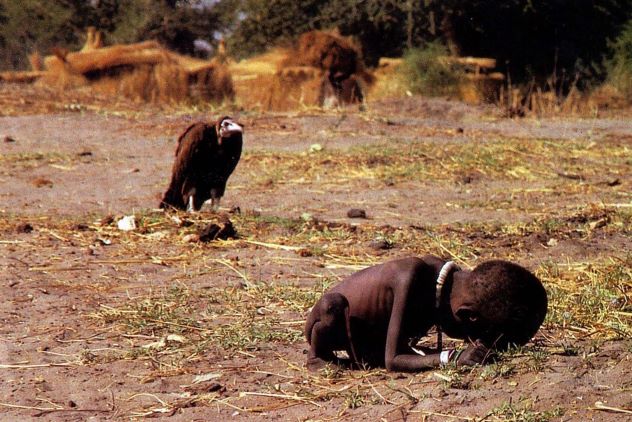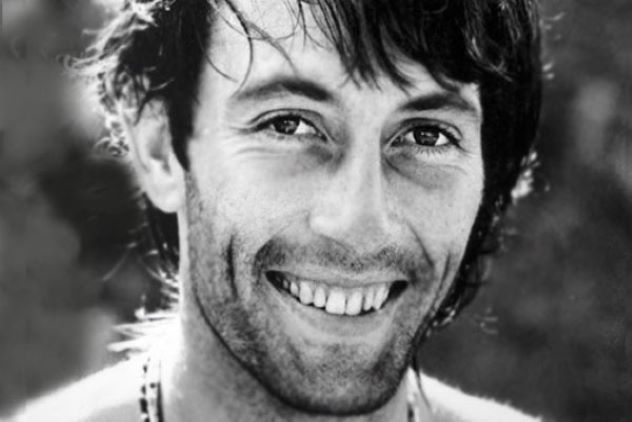I read a sad story shared in one of my WhatsApp chat groups this morning. The story really touched me and I feel inclined to share it.
It was on 26th March,1993, that a photograph titled “the struggling girl” appeared in the New York Times. Taken by Kevin Carter, an internationally renowned South African photojournalist, the iconic photograph taken in Sudan when the country was plagued with severe famine, also known as “the vulture and the little girl”, showed a vulture patiently watching a starving Sudanese child.
At the time the photograph was taken, Kevin Carter had been invited by Robert Hadley, the information officer for the UN operation Lifeline Sudan, to report on the famine in Southern Sudan. While in Sudan, Carter saw a little “girl” who was making her way to the United Nations Feeding Centre. Overcome by tiredness, she had stopped to rest on the road.
A vulture had landed behind her, watching her patiently and waiting to feast on her. Carter took a shot of the vulture and the girl. Unknown to him, he had just captured a photo that was to become one of the most controversial photographs in the history of photojournalism.
The photograph was sold to the New York Times and after its publication, people began to call to inquire whether the child survived and whether the photographer had helped the poor child.
The photo was heavily criticised by many who felt that taking that photograph was not appropriate in view of the precarious situation the girl was in. Many also questioned Carter’s ethics.
During a phone-in interviews Carter granted, a caller asked Carter what happened to the child. When Carter replied that he did not wait to find out after the shot as he had a flight to catch, the caller replied, “I put it to you that there were two vultures on that day;one had a camera.”
In his defence, Carter explained that photographers were told not to touch famine victims for fear of spreading diseases. While expressing deep regrets that he hadn’t saved the child, he also acknowledged that there wasn’t much he could have done to help.
Things began to get dark for the young photographer. He had begun to spiral into a great depression by stepping up his drug habit and alcohol use.
In March 1994, the photo won the Pulitzer Prize for feature photography. On July 27 1994, at around 9:00 pm, Carter parked his red pick-up truck in a field he used to visit often as a child. He went on to use silver gaffer tape to attach a garden hose to the exhaust pipe and run it to the passenger-side window. After turning on the engine he laid on his side using the knapsack as a pillow while listening to music as he waited for death to come.
Carter left a suicide note behind and that read:
“I am really really sorry… the pain of life overrides the joy to the point that joy does not exist… I am depressed…without phone money or rent… money for child support… money for debts… money!!!. I am haunted by the vivid memories of killings and corpses and anger and pain… of starving or wounded children, of trigger-happy madmen, often police, of killer executioners…”
Carter’s suicide at age 33 cut short his career in photojournalism, but he took courageous steps to ensure that the evil in the world was exposed. It has been reported that the child in Carter’s iconic photo was actually a boy and not a girl and who eventually received help and was taken to the UN food aid station. Sadly, his father revealed that he died of fever, 4 years later.
The story of Kevin Carter highlights the morbid history of the violence and inhumanity that photojournalists had to witness. Winning the Pulitzer Prize put pressure on him, adding to the guilt and the stress he had accumulated in his mind while documenting some of the most horrid places in the world.
Carter has left an indelible legacy in the world of photojournalism.
 CY@CY Says Welcome to my dreamscape. Where a Lim is also a Ling.
CY@CY Says Welcome to my dreamscape. Where a Lim is also a Ling.


Faced with the truth there is little rise to celebrate especially when it comes to unnecessary sufferings caused by power play, greed, cruelty. Indifference, propaganda and political survival.
Despite the sufferings in the world, I believe there is a God who cares.
Man’s free will had to be bridled.